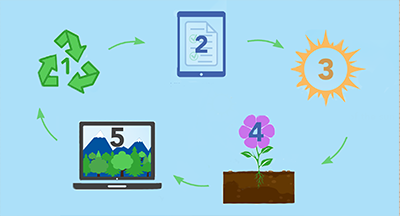
Interoperability is a real mouthful, one of those fancy words that stand for the simplest of concepts: tools working together seamlessly. Are all interoperable systems created equal? Let’s explore three ways interoperability expands technology horizons, so you can ensure your next vendor partner can summit the steep challenge of making things oh-so-simple.
Trait one: Built-in
Interoperability is built into every strand of the solution’s DNA vs. bolted on as an afterthought. Crosswalking is a process edtech vendors (and district IT pros!) use to map and match similar data sets. When that process is well understood across all departments a vendor can maintain both consistency and the ability to create tailored solutions for unique districts.Trait two: Standards-based
Interoperability gives us options, but on a standard other systems can incorporate, understand, and uphold independently. Instead of retrofitting a new third party to fit the data requirements existing systems need, when systems agree on a standard (such as Ed-Fi) they already speak a common language. No special translation required.Learn more about how edtech integrations work with different educational data standards.
Trait three: Security strategy
Interoperability requires a strong security strategy, standards agreement, and edtech purchasing strategy—you’re not just buying a software solution, you’re welcoming a partner into an edtech ecosystem. While interoperability works like a one-way valve (aka, if the bad actors get into one system, not all your data is compromised necessarily), constant vigilance is the name of the K12 data security game. So in addition to talking the talk about multifactor authentication, strong passphrases, and secure password management, the next vendor you welcome into your interoperable strategy must demonstrate dedication to your students’ data privacy. Not only because FERPA requires it, but because it’s the right thing to do for the students we all serve.Seamless and secure passage of data between edtech systems makes life easier for people who work in schools. When done well, interoperability can help improve outcomes for students and retention for teachers.
Follow-up resource: Automation is soothing when done right
How can automating data management help retain teachers? Find out in The Best Benefit You Can Give Teachers? Easing the Mental Load.WHAT'S NEXT FOR YOUR EDTECH? The right combo of tools & support retains staff and serves students better. We'd love to help. Visit skyward.com/get-started to learn more.

|
Erin Werra Blogger, Researcher, and Edvocate |
Erin Werra is a content writer and strategist at Skyward’s Advancing K12 blog. Her writing about K12 edtech, data, security, social-emotional learning, and leadership has appeared in THE Journal, District Administration, eSchool News, and more. She enjoys puzzling over details to make K12 edtech info accessible for all. Outside of edtech, she’s waxing poetic about motherhood, personality traits, and self-growth.




